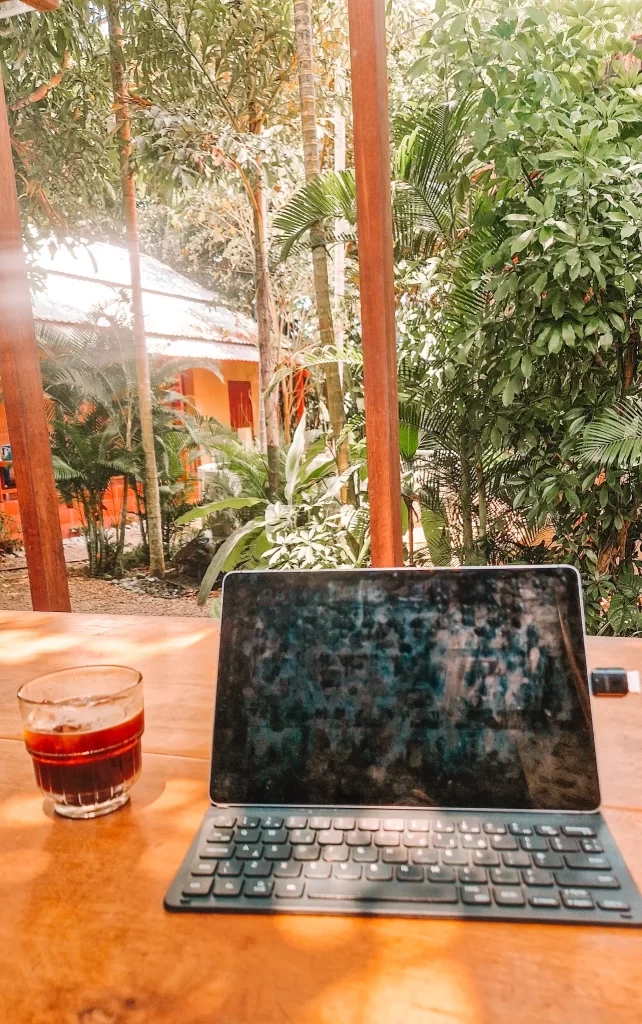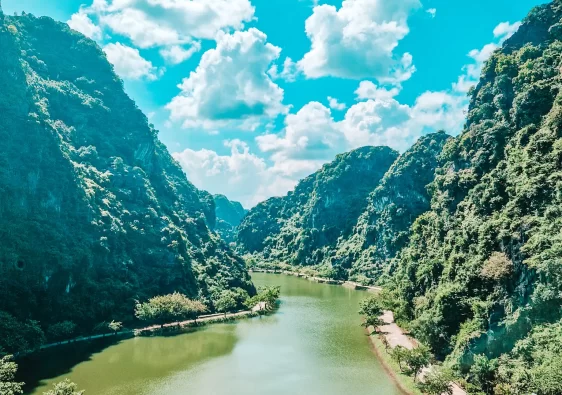Looking for the best cafes in the Hoi An rice fields but overwhelmed by the sheer number of options? You’re not alone. With new spots constantly popping up among the lush green paddies, it’s hard to tell which ones are truly worth the ride—and which are just pretty backdrops with mediocre coffee. After three months living in Vietnam and three visits to Hoi An since 2010, I know my Vietnamese coffee. I’ve personally tested the views, the vibes, and of course, the espresso. If you’re looking for a peaceful escape just beyond the Ancient Town—whether you’re solo-traveling, working remotely, or simply craving a quiet spot with soul – I’ll help you skip the guesswork and head straight to the cafes that deliver on both aesthetics and atmosphere. Let’s ride.
Just so you know, this post contains affiliate links. If you book a tour, hotel, or buy something through one of these links, I may earn a small commission—at no extra cost to you. It helps me keep this blog running and full of travel tips. Thanks for the support!
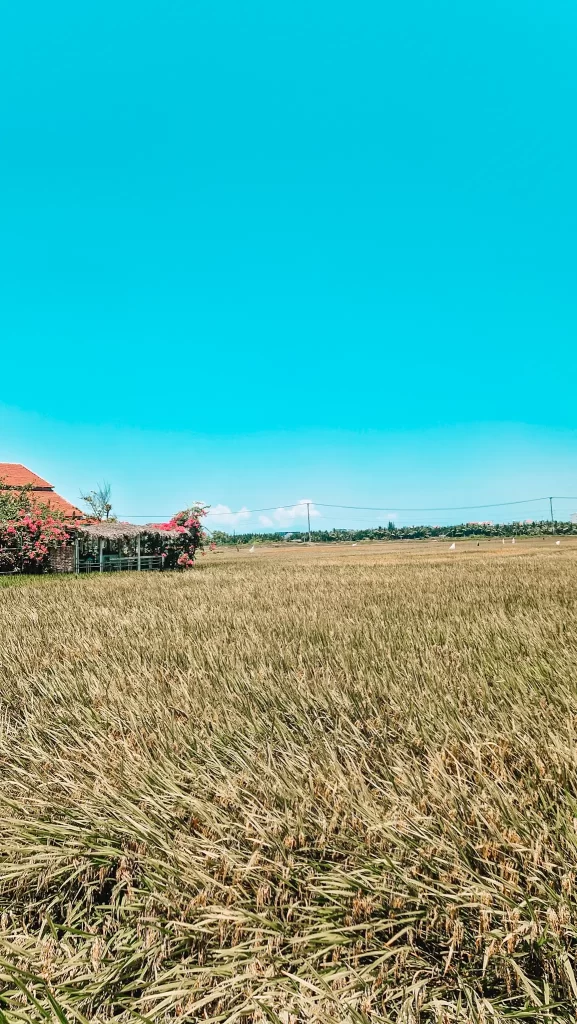
Why get out into the more rural areas of Hoi An?
Hoi An is my favourite place in all the countries I’ve visited in Asia in the past 10 months. Like George Town, Malacca and Luang Prabang, it’s a UNESCO Heritage Site with beautiful old buildings that epitomise faded grandeur, probably the best shopping in Vietnam and a range of coffee shops and restaurants to suit all tastes. There’s a beautiful river, stunning temples and pedestrian-friendly streets dripping with blooms. So why leave?
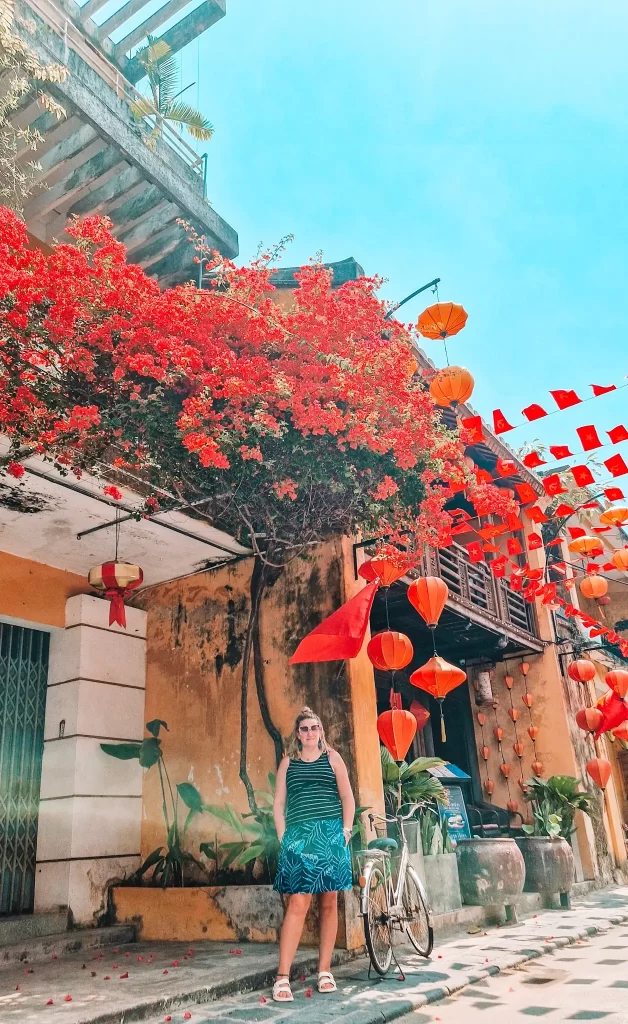
The answer is that the more rural areas surrounding Hoi An, including the rice fields surrounding the city, have their own incredible beauty. Taking a cycling day trip out into the rice fields, or just exploring by yourself, is an enormously popular activity in Hoi An. You’ll get to see lush green fields surrounded by leafy palms, and head down backstreets where houses haven’t yet been given over to hotels. You’ll see locals working in the rice fields and buffalo resting peacefully by the side of the road.
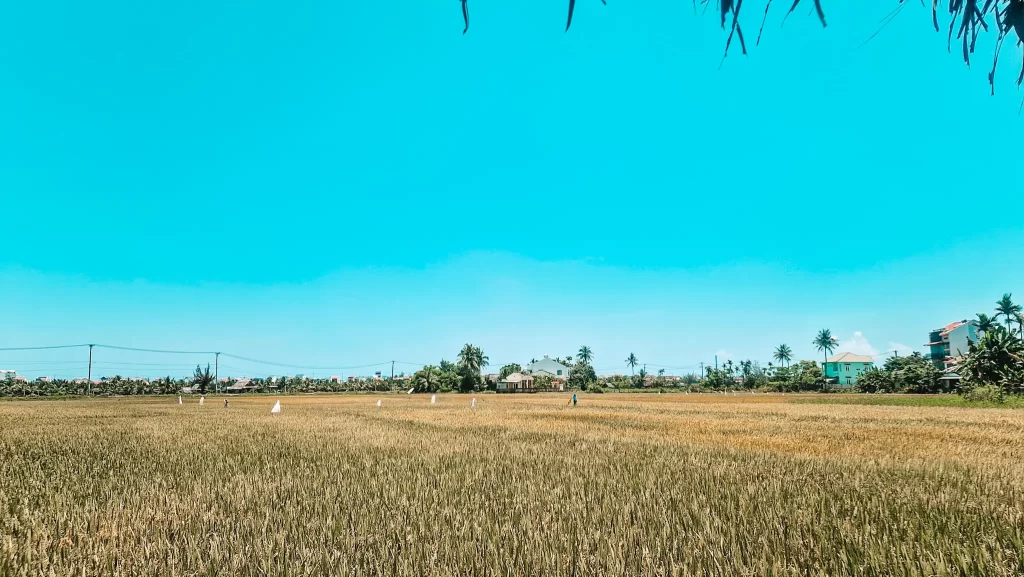
Like Chiang Mai in Thailand and Yogyakarta and Ubud in Indonesia, Vietnam is famous for its coffee. Tourist havens like Da Nang and Sapa all have incredible cafes, and one of the best parts of exploring these more rural areas of Hoi An is discovering the absolutely stunning cafes dotted around. Take time to relax and enjoy the views, possibly while reading one of my recommended books about Southeast Asia.
So if you’re wondering where to start, here are the best cafes I found in rural Hoi An.
The 5 Best cafes in rural Hoi An
Miss Hoi An Cafe (on maps as Miss HA)
Best for: those perfect Instagram shots
This cafe is a paradise among the rice fields. There are no other buildings around and the house sits among streams leading to the river, surrounded by lush green fields. A multi-floor white house, it offers a range of seating areas, from waterfront picnic tables to tables suitable for work, a few sofa-style tables and a top floor with mat-style seating.

They do an all day breakfast as well as coffee and juices, making it a great stop on your day trip exploring Hoi An’s rice fields. While I did work here for a morning, I sometimes found the music a bit loud for concentrating – consider bringing headphones if this might bother you.
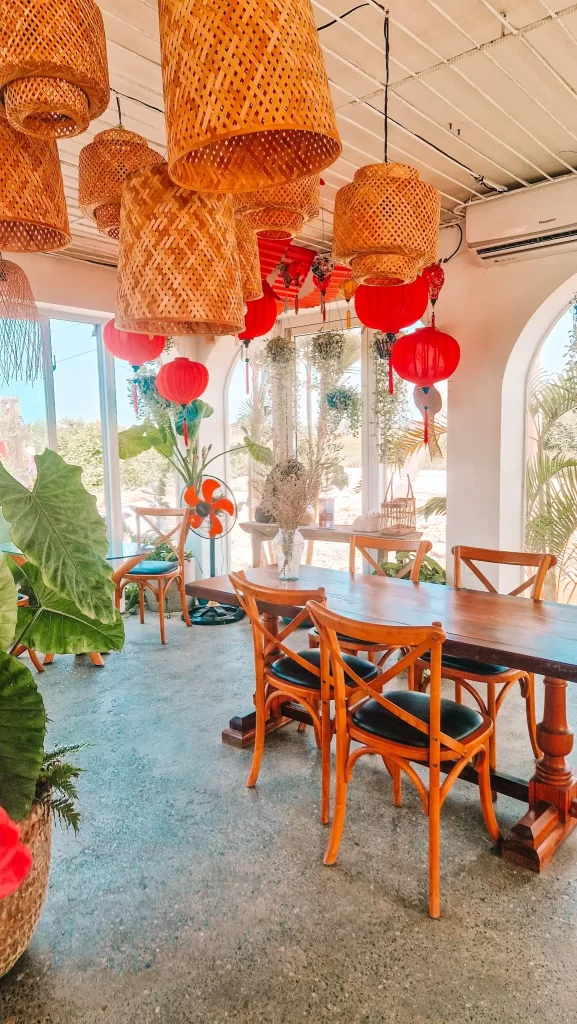
Tu Tam Book Cafe
Best for: book lovers
This place is my absolute dream. It’s a tiny little cafe hidden away down backstreets between Hoi An and An Bang – some of which are seriously bumpy! But when you get to the cafe, it’s journey is more than worth it.
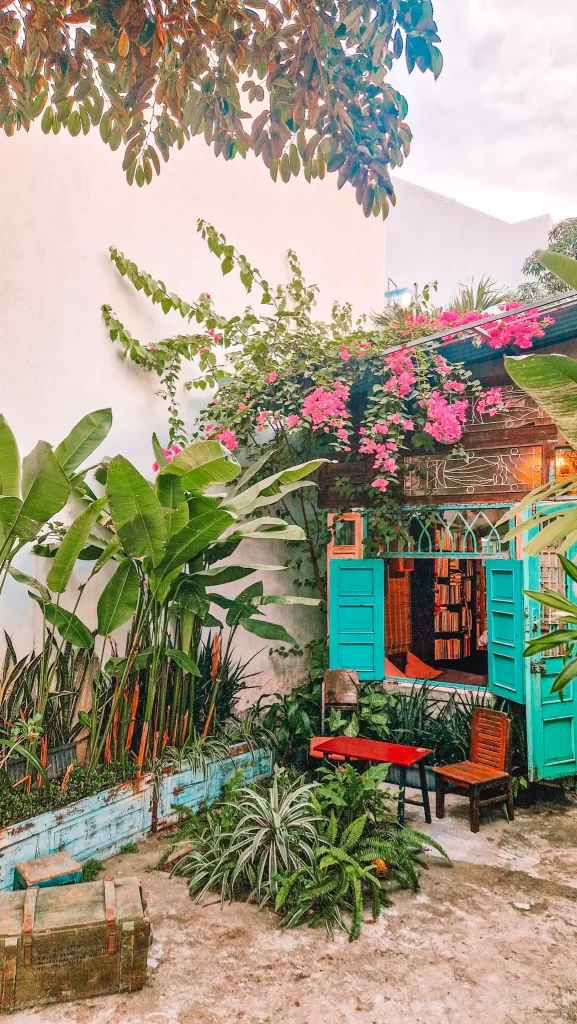
This tiny cafe is a haven for book lovers. Bookshelves line the walls, with a range of books in English, Vietnamese and a few in German. The owner wants to create a community library, and runs a book borrowing scheme, where you set down a deposit to take the books away. As lots of hotels and cafes in Vietnam will only let you read their books while visiting (my pet peeve, how can I read an entire book while sat in reception?), this is a great idea.
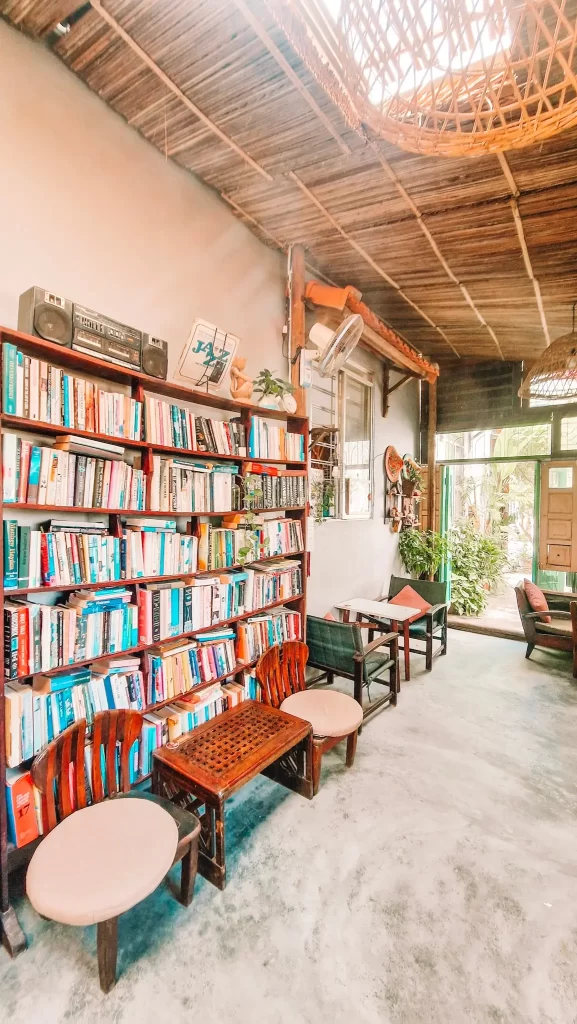
Away from the books, the cafe is also quiet and peaceful. They offer a delicious salted matcha (it was too late in the day to have my usual Salted Coffee, or Ca Phe Muoi), but a matcha with salted cream on top was an amazing offer. They also do a great banana bread, and a small workshop next door offers classes in leather working to create your very own notebook.
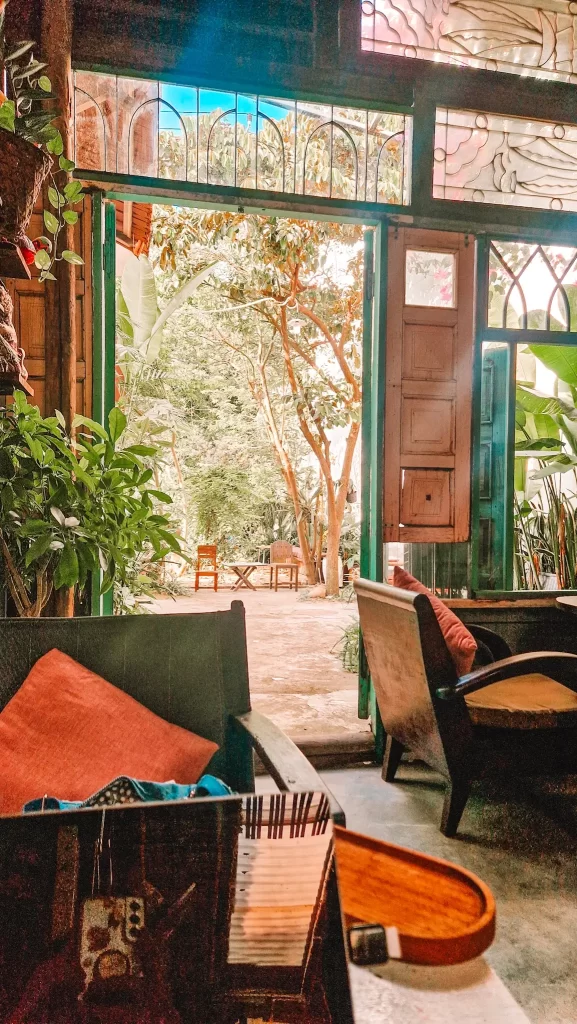
Slow Cafe
Best for: absolute peace and stunning views
This dreamy, serene cafe is set among rice fields. Sit at the front and look across fields of vibrant green, or opt for a more muted, peaceful feel in the tree-filled garden. Light music plays in the background, and the atmosphere encourages quiet reading or focused work.
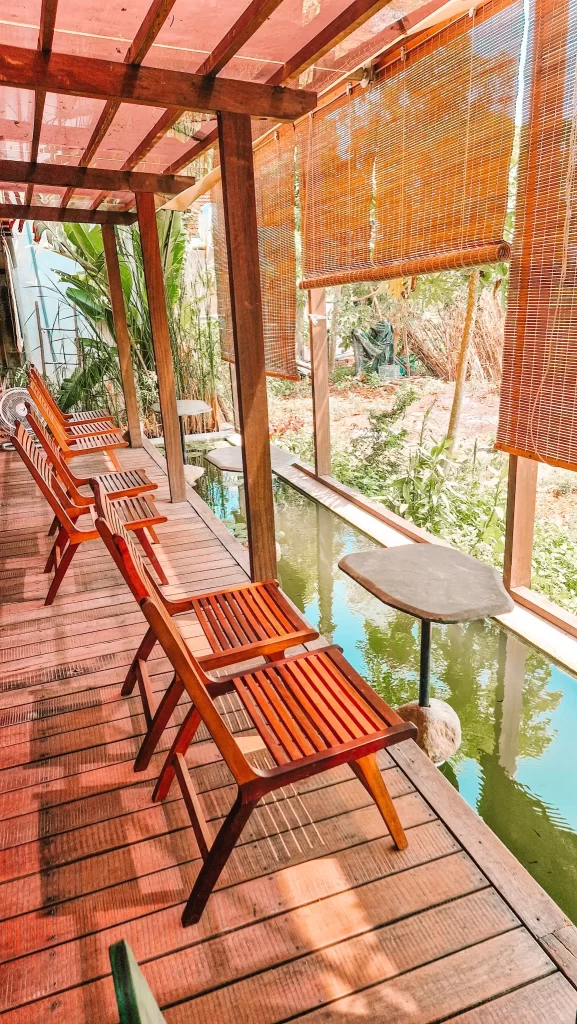
Slow Cafe offers a small menu of mostly sourdough-themed treats, as well as delicious coffee. Note that their focus is on espresso-based coffee, so this isn’t somewhere to try your first Salt Coffee.

NGHE Rice Paddy Cafe
Best for: hammocks and brunch-style food
Set right on the edge of a beautiful rice paddy, NGHE is definitely a place to relax on your bike ride around rural Hoi An. This beautiful cafe offers a range of seating including several hammocks, and chairs where you can dangle your legs directly over the rice field.

While it’s not the best for working, as most seating is designed for relaxing, there are a few spots where you can get some hours in. They also have a decent menu of breakfast and brunch offerings, as well as some garden-fresh offerings like Noodles with Five Colours – so a great place to come to get your veggies.
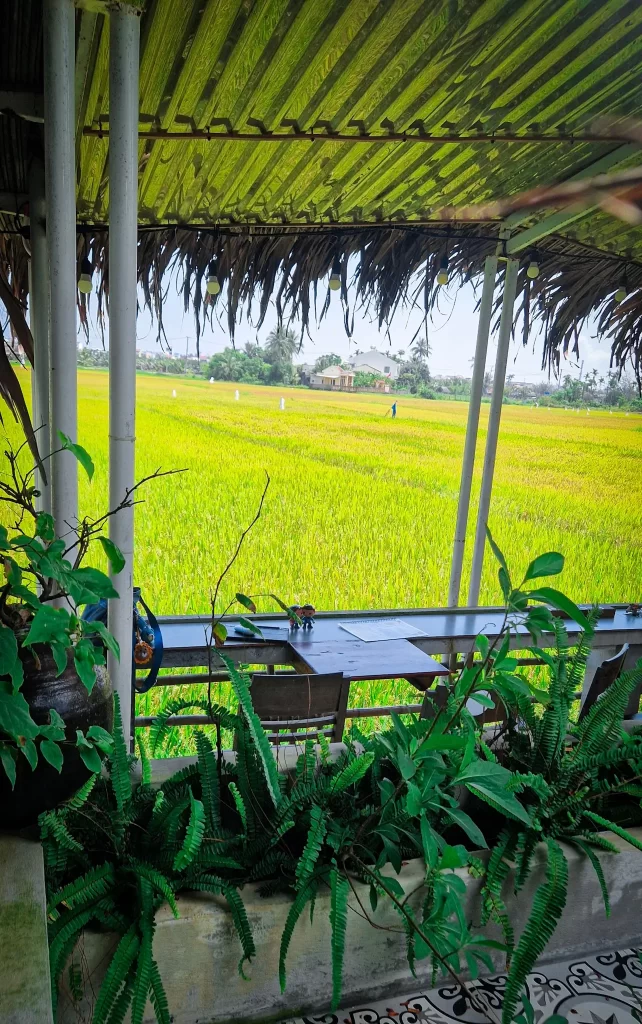
Le Locust Cafe
Best for: a small, peaceful retreat
Le Locust is a gorgeous cafe on the edge of what appears to be its own rice field. The cool interior features a small koi pond and a huge amount of leafy greenery, while the small outdoor area looks directly onto the rice fields.
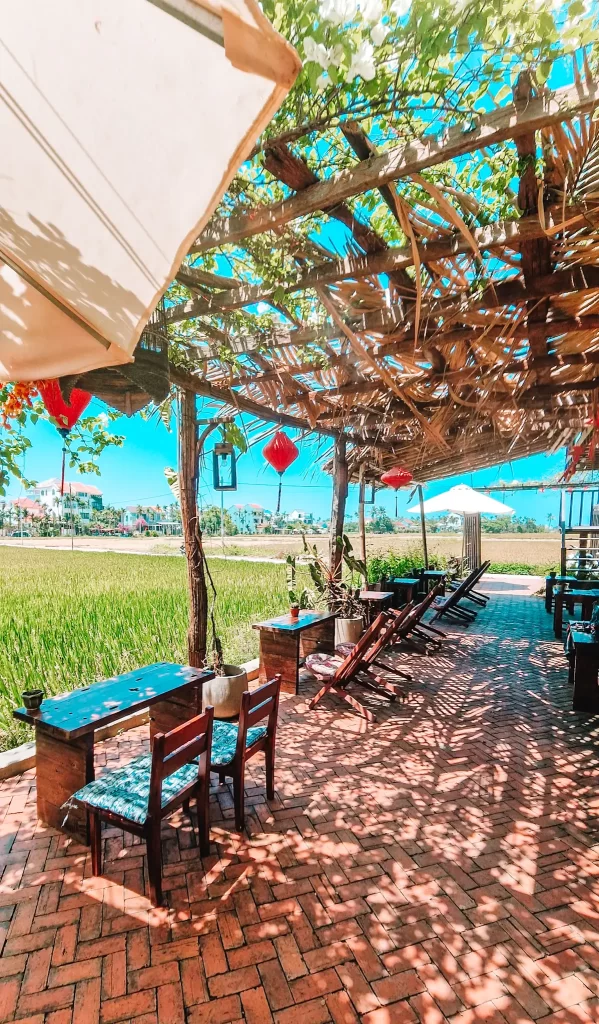
There are a range of different wooden seating types, but unlike some of the other cafes I’ve visited, no couches or hammocks. Still, Le Locust is a slice of peace, and had almost no other customers when I arrived, making it perfect to read or unwind.

Honourable mention: Bonte Coffee and Coworking
Best for: Coworking space for only 10K VND, and aircon
It was hot while I was in Hoi An in May 2025, so in my quest to find somewhere cool to work I stumbled on Bonte Coffee and Coworking. Unlike the nearby digital nomad haven of Da Nang, coworking spaces in Hoi An are few and far between – while there is a dedicated coworking hub in the rice fields, it’s very expensive at 250K VND per day.
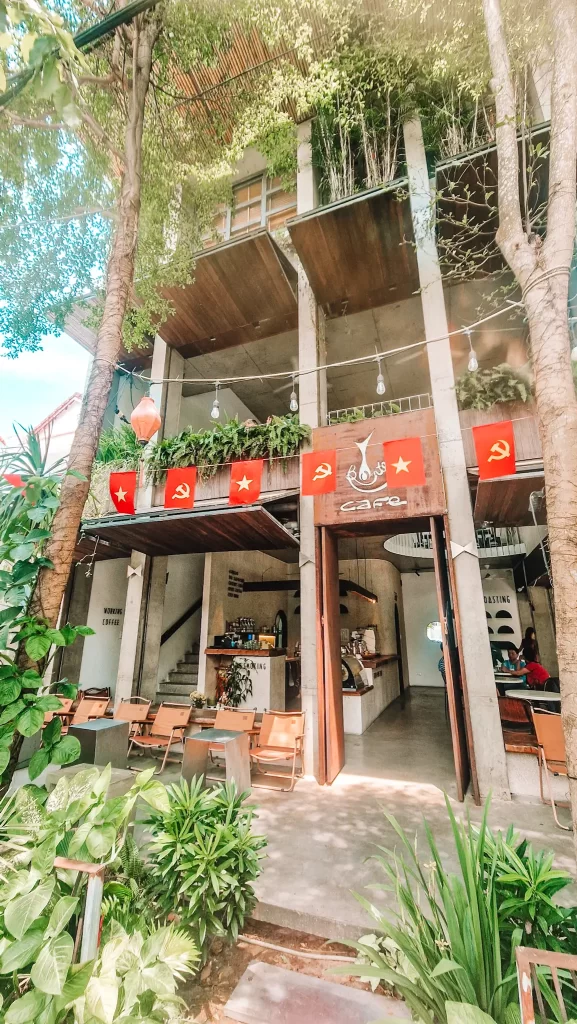
Bonte is set on the edge of Hoi An city, and spread over three floors. While the lower two floors are open air, they are still laptop-friendly. But the top floor is a dedicated airconditioned coworking space – the only cafe like this I know of in Hoi An.
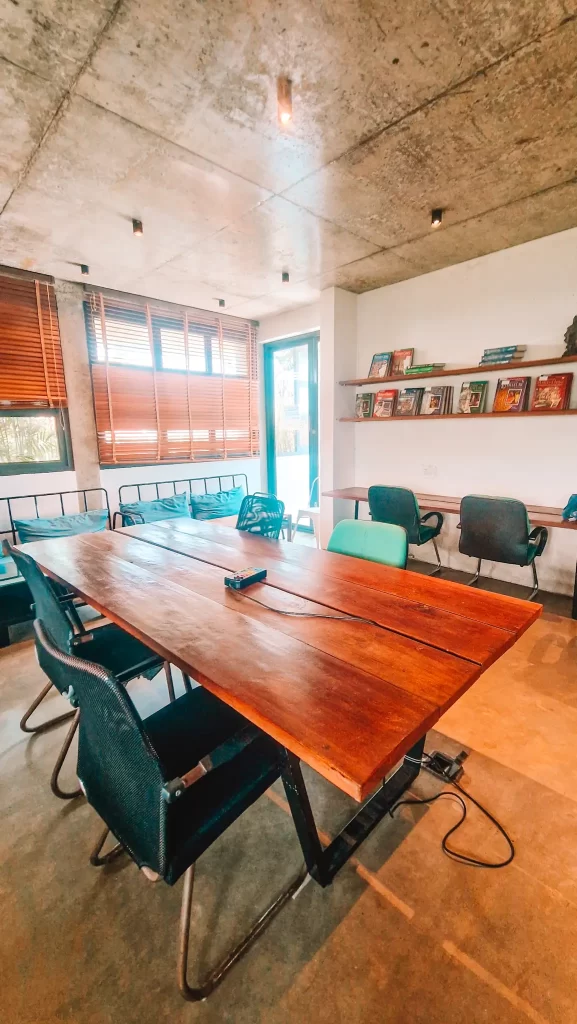
For just 10K VND (in addition to your coffee), you can sit in Bonte’s cool space for as long as you’d like, with comfortable chairs, decent size tables and access to great coffee. Their egg coffee was amazing – a rarity in Hoi An, as egg coffee is a famous delicacy from Hanoi, where I learned to make it in a coffee workshop.
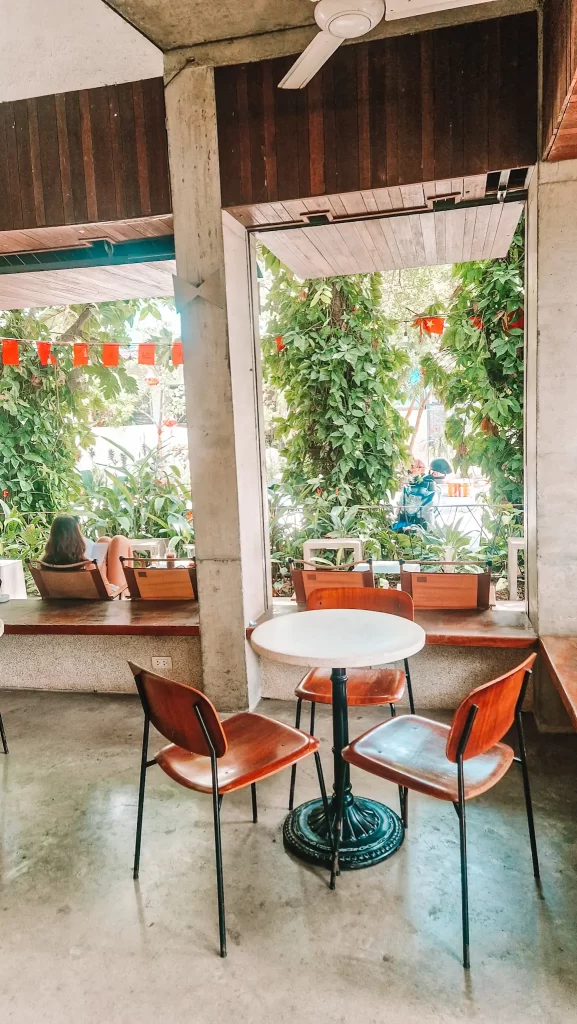
Frequently asked questions
Do the cafes in Hoi An’s rice fields offer free filtered water?
While this is common in other parts of Vietnam, for example, the cafes and coworking spaces I visited in Da Nang, it wasn’t the norm at these cafes. Some did, but it’s best to bring your own water just in case.
Is Hoi An a good destination for solo female travelers?
Absolutely. Hoi An is considered safe and welcoming for solo travelers, including women. Use the same precautions you would at home—avoid poorly lit areas late at night and use Grab (the Asian version of Uber) instead of unlicensed taxis.
Is Hoi An Safe?
Many travelers wonder about safety in Vietnam. The good news is that Hoi An is considered one of the safest cities in Vietnam for travelers.Hoi An is a tourist-friendly town and remains active well into the evening. However, take the usual precautions, particularly if you are out late at night. For example, make sure to use Grab (the Asian version of Uber) rather than unlicensed taxis or motorbikes.
The British Foreign, Commonwealth and Development Office (FCDO) states that the most frequent types of crime in Vietnam are bag snatching and theft. However, Hoi An is considered one of the safest cities in the world for solo travellers. That said, it’s still wise to take standard precautions, especially late at night.
When is the best time to visit Hoi An?

The best time to visit Hoi An is the peak tourist season, from April to August. This offers drier weather and sunnier days, although temperatures do get very high later in this season, reaching 40C in July and August.
September to March is considered the wet season, and is less popular with tourists.
How to get to Hoi An: Air
While Hoi An doesn’t have its own airport, Da Nang International Airport is less than an hour from Hoi An. It’s a modern airport with excellent facilities. Regular flights arrive from domestic destinations including Hanoi and Ho Chi Minh City, as well as international destinations like Bangkok, Kuala Lumpur, Singapore and Siem Reap.
To get from the airport to Hoi An, you can take Grab (the Asian version of Uber) for about 300K VND. You can also ask your hotel to organise a private transfer.
There are also shared shuttle buses, which you can book via 12goAsia.
How to get to Hoi An: Train
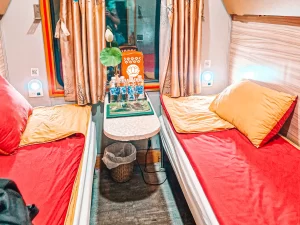
Around an hour from Hoi An, Da Nang has one of the main stations on Vietnam’s extensive railway network, which stretches from Ho Chi Minh City in the south to Hanoi and even Sapa in the north. Trains arrive and depart from Da Nang Train station, with departures to key destinations several times a day.
Train journeys from Da Nang, aside from Hue, tend to be long:
Hanoi – 17 hours
Ho Chi Minh – 19 hours
Hue – 3.5 hours
I wrote a full guide on the Vietnamese trains I took from Hoi An (via the train station in Da Nang) to Ninh Binh, and then from Hanoi to Sapa, I loved the experience!
How to get to Hoi An: Bus
Vietnam’s buses have gained internet fame in recent years, with the VIP Sleeper buses offering some of the best luxury bus travel in the world. Taking a bus from Hoi An to other destinations across Vietnam is a popular option, with destinations including Ninh Binh, Hanoi, Ho Chi Minh City, Hue, Nha Trang and others.
Buses in Hoi An have a range of departure points across the city, as big buses can’t enter the Old Town area. You’ll need to work out the best departure point for you, or some will offer a free pickup service via minivan.
Buses in Vietnam vary in terms of comfort and price, for example VIP sleeper Buses offer wide beds with a seat on either side of the aisle, while cheaper sleeper buses have much less space as they have three beds per row. Do your research in advance to figure out which option suits you best. I read reviews on 12goasia and on Google before selecting a company.
Is it easy to get around in Hoi An without speaking Vietnamese?
Yes, in most tourist areas, basic English is widely spoken, especially by hotel staff, tour guides, and Grab drivers. That said, learning a few phrases like “Xin chào” (hello) or “Cảm ơn” (thank you) is appreciated and can enhance your experience.
Make sure you have Google Translate downloaded onto your phone for any more complex situations.
What Should I Pack for Hoi An?
Bring light, breathable clothing for hot weather, a light rain jacket (especially in the wet season), sunscreen, insect repellent, and comfortable shoes for walking. For temples and imperial sites, bring clothing that covers shoulders and knees. Many of the cafes in this guide don’t offer unlimited filtered water, so a water bottle is a good idea to make sure you stay hydrated when cafe hopping.
Is Tipping Expected in Vietnam?
Tipping isn’t mandatory in Vietnam, but it’s appreciated, especially in tourist-heavy areas. Small tips (10–20K VND) are common for porters, drivers, and local guides. In restaurants, rounding up or tipping 5–10% is a kind gesture but not required.
Can I Use Credit Cards in Hoi An?
Credit cards are accepted in many hotels, upscale restaurants, and tour agencies. However, cash (Vietnamese Dong or VND) is essential for markets, small shops, street food, and local taxis. ATMs are widely available, although withdrawal costs vary so check these out in advance (Google Maps can be a good source for this).
Where Should I Stay in Hoi An?
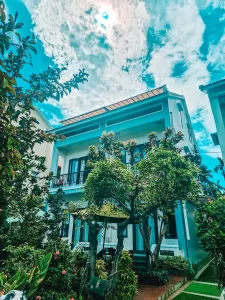
There’s an abundance of choice for hotels in Hoi An, from charming local stays to riverside resorts. While there are hotels in the Ancient Town itself, I’d personally be cautious about choosing these, as Hoi An is a town that really comes alive at night and you’re likely to experience street noise.
You can also choose to stay on one of the two islands opposite the main town. An Hoi is where the main night market happens, and the front street is lined with bars – I would avoid these areas. Beyond this, the back streets of the island are quieter.
I stayed on Cam Nam, where there are far fewer tourists. This quiet island is about 10 minutes walk from the Ancient Town, but feels a million peaceful miles away. While there are a number of hotels, there are still lots of private houses, and it feels much less touristy.
If you can afford it, there are also a lot of beautiful upmarket hotels lining the river. These have stunning views and are usually away from the noise of the main town.
Finally, you can choose to stay out in the rice fields themselves. There are many hotels offering stunning views, and usually swimming pools to keep you cool.
Options include:
Yen Villas – this is where I stayed, and I can’t recommend it highly enough. Rooms are spacious and clean. The air conditioning works well, and there is a beautiful small pool. The family running the small hotel are among the most helpful and kind people I’ve come across while travelling. It’s around $15 per night.
Hoi An Town Centre Hotel – on An Hoi, this highly rated hotel is budget/mid-range for Vietnam (around $20 a night). It has excellent reviews, and is away from the noise of the night market.
River Town Hoi An Resort and Spa – also on An Hoi, but on the riverfront, this 5* resort has over 2000 reviews, a 4.7 rating on google and costs around $75 per night.
Mulberry Collection Silk Eco – if you’re keen to stay on the mainland, this 4* hotel has over 700 reviews on google and a 4.5 rating.
Are there vegetarian or vegan options in Central Vietnam?
Yes! Vietnamese cuisine has excellent plant-based dishes, and you can find dedicated vegetarian and vegan restaurants in both Hoi An. Popular dishes include bánh xèo (local pancakes) with mushrooms, veggie pho, vegetable spring rolls and vegan versions of cao lầu.
